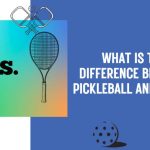If you’re looking for a fun and active way to enjoy the outdoors, you might want to try platform tennis or pickleball. These two sports are similar in some ways, but they also have some key differences (platform tennis vs. pickleball) that make them unique and appealing to different types of players.
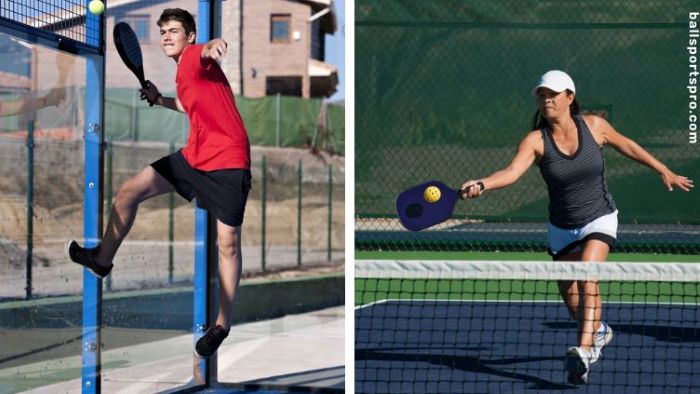
In this article, we’ll explain everything you need to know about platform tennis vs. pickleball, from the equipment and rules to the benefits and challenges of each sport.
Let’s get started!
Platform Tennis Paddles vs. Pickleball Paddles
One of the first things you’ll notice when comparing platform tennis and pickleball is the difference in the paddles used.
- Platform tennis paddles are usually composite materials with a perforated surface and a short handle. They are about 18 inches long and 9.5 inches wide and weigh between 12 and 14 ounces. Platform tennis paddles are designed to provide power and control in cold weather conditions and to withstand the impact of hitting the ball off the wire walls.
- On the other hand, pickleball paddles are typically made of wood, graphite, or fiberglass, with a smooth surface and a longer handle. They are about 15 inches long and 8 inches wide and weigh between 6 and 14 ounces. Pickleball paddles are designed to provide speed and accuracy in warm weather conditions and reduce vibration and noise.
Both platform tennis and pickleball paddles have similar shapes and grip sizes but differ in weight, balance, and feel. Depending on your preference and skill level, one paddle type is more suitable for your game.
Other Equipment Differences between Platform Tennis and Pickleball
Besides the paddles, there are other differences in the equipment used for platform tennis and pickleball. Here are some of them:
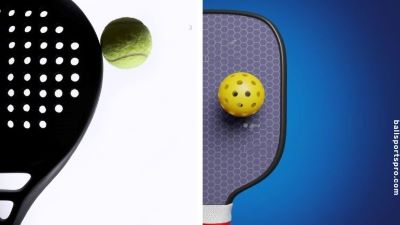
1. Balls
Platform tennis uses a spongy rubber ball with a lot of bounce and spin. The ball is yellow and has a diameter of 2.5 inches. Pickleball uses a plastic whiffle ball with holes with less bounce and speed. The ball can be yellow, white, or orange and has a diameter of 2.9 inches.
2. Court Size
Platform tennis courts are built on pilings with deck boards and chicken wire walls, while pickleball courts can be any flat, hard surface with painted lines and a net. Platform tennis courts are longer and wider than pickleball courts (60 feet by 30 feet vs. 44 feet by 20 feet), and the net is higher in platform tennis (34 inches vs. 36 inches at the center).
The platform tennis court is raised to provide a way to heat the court to prevent snow and ice buildup, which makes it possible to play year-round in cold climates. The pickleball court is not heated, which means it can be affected by weather conditions such as wind or rain.
3. Shoes
Platform tennis players wear shoes with good traction and stability, insulation, and waterproofing for playing in cold and wet conditions. The shoes are similar to tennis shoes but have more rugged soles and toe caps.
Pickleball players wear shoes with good cushioning and support, as well as breathability and flexibility for playing on hard surfaces. The shoes are similar to tennis shoes but have less weight and bulk.
4. Clothing
Platform tennis players wear warm and comfortable clothing, moisture-wicking, and wind-resistant for playing in winter weather. The clothing can include layers of shirts, jackets, pants, hats, gloves, and socks.
Pickleball players wear cool and comfortable clothing, as well as sun-protective and sweat-absorbent for playing in summer weather. The clothing can include shirts, shorts, skirts, caps, visors, and wristbands.
Platform Tennis vs. Pickleball – The Main Differences
Besides the equipment and court size, some other key differences between platform tennis and pickleball affect the gameplay and style of each sport. Here are some of the main differences:
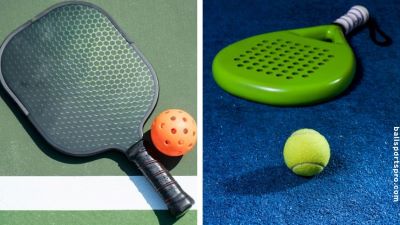
1. Scoring
In platform tennis, players use the same scoring system as tennis, with points going from love to 15 to 30 to 40 in-game. Players must win six games to win a set and usually play best of three sets (or best of five in some tournaments).
In pickleball, players use a unique scoring system that only counts points for the serving team. Points go from zero to 11 (or 15 or 21 in some variations), and players must win by two points to win a game. Players usually play best of three games (or best of five in some tournaments).
2. Serving
In platform tennis, players serve overhand from behind the baseline, just like in tennis. They only get one serve attempt per point unless the ball touches the net and lands in the service box (called a let).
In pickleball, players serve underhand from behind the baseline, diagonally across the court. They get two serve attempts per point unless they commit a fault (such as hitting the ball out of bounds or into the net).
3. Faults
In platform tennis, faults occur when the serve hits outside the service box or hits the net or wire walls before bouncing in the service box. In pickleball, faults occur when the serve hits outside the service box or hits the net before bouncing in the service box.
4. Non-Volley Zone
In platform tennis, there is no designated area where players cannot hit the ball before it bounces (called a volley). Players can volley anywhere on the court, including near the net.
In pickleball, there is a 7-foot area on each side of the net where players cannot hit the ball before it bounces (called the non-volley zone or kitchen). Players can enter this zone only after the ball bounces or to hit a ball that bounces in this zone.
5. Wire Walls
In platform tennis, players can hit the ball off the wire walls after it bounces once on their side of the court. It creates more opportunities for rallies and angles.
In pickleball, players cannot hit the ball off any walls or fences, and the ball must bounce once on each side of the court before being volleyed.
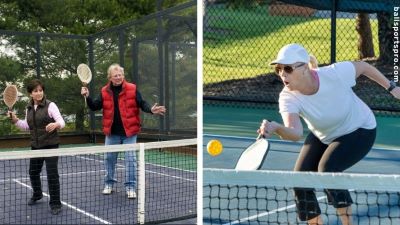
6. Double Bounce Rule
In platform tennis, no rule requires both teams to let the ball bounce once before hitting it (called the double bounce rule). Players can hit the ball on the first bounce or after it bounces off the wire walls.
In pickleball, a rule requires both teams to let the ball bounce once before hitting it (called the two-bounce rule). Players cannot volley the ball on the first bounce or the serve return.
FAQs
A sport called platform tennis was created in 1928 by James Cogswell and Fessenden Blanchard in New York. It is played on a raised court with wire walls, a spongy ball, and a perforated paddle. It can be played year-round in cold climates.
Yes, pickleball can be played on the platform tennis court, but some adjustments may be needed. For example, the net may need to be lowered, the service boxes may need to be marked, and the wire walls may need to be ignored. Alternatively, some platform tennis courts have pickleball lines painted on them.
A platform tennis court is a court that is built on pilings with deck boards and chicken wire walls. It is 60 feet long by 30 feet wide, with a playing area of 44 feet by 20 feet. The net is 34 inches high at the center and 37 inches at the ends. In order to prevent snow and ice buildup, the court is heated.
Platform tennis is popular in the United States, especially in the Northeast and Midwest regions. It is also played in Canada and Europe but to a lesser extent. According to the American Platform Tennis Association, there are over 15,000 players and 4,000 courts in the US.
Wrap Up!
As you can see, platform tennis and pickleball are two different sports that use paddles and balls on a court. However, they have many differences in equipment, rules, and gameplay. Both sports are fun and can be played by anyone regardless of age or skill level. They both offer great exercise and fun, supportive communities.
If you’re looking for an active outdoor hobby, platform tennis or pickleball may be right for you! You can try both sports and see which one you enjoy more or play both depending on the season and court availability. Either way, you’ll have a blast and meet new friends!
We hope this article has helped you understand the differences between platform tennis and pickleball and inspired you to try them. We would be glad to answer any questions or concerns you may have. Thanks for reading!

I am a professional physiotherapist and the author of the BallSportsPro. I worked with athletes of all levels, from amateur to professional, and i helped them overcome injuries and improve their performance. I am a certified Pickleball instructor and has been playing the sport for over 10 years.


